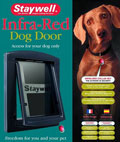Crate training a golden retriever is not merely beneficial but also an extremely essential task that you must undertake. Indeed, it’s necessary for you to properly crate train or house-train your golden retriever in order to keep a trustworthy and obedient dog. In fact, crate training is among the fundamental golden retriever training lessons that you and your dog must efficiently carry out.
It is for a fact that only a few people consider crate training their dogs. While some folks are too busy to deal with their dogs, there are also those who think that such training is one inhumane act. However, correct methods of crate training a golden retriever can deliver lots of benefits that will certainly astound you. In addition, crate training also serve as a stepping stone toward achieving other complicated stages of golden retriever training.
Crate training is necessary especially if you have a rather hyperactive and frolicsome golden retriever. Crates or kennels can ensure your dog’s wellbeing. Hyperactivity, aggression and other behavioral problems can also be eliminated through proper crate training. You can even forbid your dog from tearing apart your belongings or furniture should he become predisposed to nibbling or mouthing stuff.
A crate-trained golden retriever is easier to potty train or housebreak. After all, dogs will never try to pee or dump in their own private spot unless they can no longer hold it while being restrained in their crates or that their masters aren’t around.
Besides, golden retrievers really need to have crates of their own as it is where they feel intuitively safe. The sooner you can crate train your golden dog, the more responsible and obedient he grows to be.
Indeed, you get to have a fairly-obedient, well-mannered and responsible dog had you been able to properly crate train your golden retriever. Behavior problems such as aggression and dominance are also not as likely to show itself. And the easier it gets to implement various golden retriever training courses if you succeed in potty training your dog through the help of his crate. Your dog will no longer feel unwilling to do other dog training training routines.
Just see to it that you don’t restrict your golden retriever for a long time. In addition, crate training routines should not also consume a lot of time because your dog might end up feeling gloomy, neglected or abandoned. If possible, command your dog to enter his crate only during bedtime or at night. It’s never wise to leave your golden retriever confined in his crate for more than four hours. As you can see, your dog is unlikely to pee or soil his own safe haven. He will surely look for a place to do his business. He will feel distressed, uncomfortable and restless and would then persist in barking until given attention.
Of course, crates shouldn’t be used as an approach to penalize your golden retriever. Only positive or pleasant things such as treats, delicious meals, comfortable bed or blanket and safety or privacy should be associated to the crate. Evidently, those dogs that have been properly crate-trained are more confident and productive during golden retriever training sessions than those that have been forced to do crate training. Remember, severe methods of training will never help you generate positive and favorable results.
Did you know that crate training must be an crucial element of your labrador retriever training programs? Perhaps you have no idea that crate training is one significant and beneficial endeavor. Indeed, it’s quite necessary that you properly crate train your labrador dog as early as possible. This way, you can help your dog grow more obedient, contented and responsible. Moreover, the sooner you can crate train your pet, the easier and more enjoyable it gets to achieve several labrador retriever training courses and activities.
Not many people take into consideration the benefits and value of performing proper crate training. For that reason, they are often up against many problems concerning their dog’s habits and behaviors. Those people who neglect the need for proper crate training are usually having a tough time working with their dogs. They often have trouble with behavioral problems like dominance, stubbornness and hostility. Unfavorable habits such as furniture chewing, urine marking and digging also come about. This is among the many reasons why wise and serious labrador owners see to it that they properly crate train their dogs.
It is for a fact that various behavior issues can be held back or thoroughly exterminated if you do crate training properly and consistently. Believe it or not, the more labrador retriever training lessons and courses you undertake, the lesser probabilities you have of rearing a bothersome pet. Because of this, it is truly wise that you start up dog training for as soon as possible. Remember, with dog ownerships comes the great responsibility to do diverse dog training programs. Failure to properly train, exercise, feed and take good care of your pet could lead to quite a few troubles and accidents. You won’t really take pride in owning such a exceptional dog.
Crate training is also the key to effective potty training or housebreaking. In fact, the moment you start crate training should also be the moment that you start out potty training your labrador dog. You must exploit your dog’s crate for you to teach him proper toilet habits along with other sensible traits. Naturally, your labrador must have your guidance, leadership and consistency. You always have to be very persistent, disciplined and patient. In this way, you can accomplish a satisfying, effective and rewarding dog training endeavor.
Moreover, separation anxiety along with destructiveness and other unacceptable dog habits can also be warded off if you can efficiently crate train your labrador retriever dog. You are not as likely to handle a hyperactive and unruly labrador. You will surely be able to raise a rather obedient and well-mannered dog. And the sooner you can accomplish the process of crate training, the quicker you can also start taking on complex levels of labrador retriever training. Now isn’t this something that you and your dog want to systematically carry out?
We have been previously talking about the importance of dog training and how exactly you can address this issue. For those who are for the first time on the blog we recommend to read this post with all dog training tips and details How to House Train Dogs – How to Train My Dog Knowledge Base
Starting from today we are coming to the more detailed topics of dog training, so that you could benefit from being the reader of our blog in simple and useful things you might need right now about training your dog.
Today we would like to show you how you can train a dog the useful skill of stop barking.
We keep publishing useful dog training tips on www.mainstreetdog.com blog, because we firmly believe that dog training helps a dog and a human find common language and understanding.
We have already published a short video about how to train your dog to stop barking, you can see it here Train dog stop barking skill – Free Dog Training Video
Today we would like to show you how to train your dog to heel.
While Yorkshire Terriers are incredibly intelligent dogs that will easily learn tricks and such, it is believed that the Yorkshire Terrier is the hardest to housebreak. Housebreaking a Yorkie, is probably the first thing that you want to teach your Yorkshire Terrier, and there is a right way and a wrong way to do this.
The first step is to confine your Yorkshire Terrier to a small space or small room, and to establish a place where it is acceptable for him to relieve himself. It is important that you teach your dog this immediately, and keep him confined until he is consistently using the appropriate area for relieving himself. From there, you can start taking him outdoors to relieve himself. Note that Pets can be litter box trained as well, but it is important to clean out the litter box each day.
Once your Yorkshire Terrier is housebroken, the real fun can begin. Hopefully, during housebreaking he has learned his or her name. Make sure that you use his name often. You should start training him to obey basic commands; such as sit, lay, come, and stay. Work on just one command at a time, per training session.
Realize that these tiny dogs have tiny attention spans and ten or fifteen minutes of training per session, maybe three times a day is sufficient. The important thing is that you work with the dog each and every day. Do not skip days! Within a week or two, your Yorkshire Terrier should be obeying these commands the majority of the time.
Your Yorkshire Terrier associates words with items as well. Give each of his toys a name, and teach him their names. For example, when you throw a ball, you can command him to get the ball. Don’t simply say fetch, and don’t throw the ball without saying anything. Use the command ‘get’ or ‘fetch’ with the word ‘ball.’ Do this with all of his toys, one toy at a time, until you can tell him to fetch a certain toy, and he can pick that specific toy out of a group of other toys.
Other than basic commands, house training, and word association, there are numerous tricks that you can teach your Yorkshire Terrier, such as rolling over, dancing, and shaking hands and such, but more importantly, you need to teach your Yorkshire Terrier good manners.
Remember that he will be living in your home, as a member of your family. He will be there when you have guests as well. Your Yorkie must be taught not to jump up on people, and also be taught to stop barking at your command. He should never be allowed to beg for food while you are eating, to eat off of your plate, or to be hand fed while you are eating. Your Yorkie needs to be able to listen to certain commands so that he can get along with the other people – and animals – in your home.

Care for your English Mastiff the practical way. Do you own an English Mastiff and you’re proud of it? If you have and if you’re proud, then, you are very lucky for you have come across a blog that spend its time in sharing some personal overview & understanding on how to handle this kind of mutt, so to speak. All over the Internet, there are lots of English Mastiff dogs information that you can find and there are even some domain that offer free tips on the proper way to care for, train or handle an English Mastiff and this blog can share a personal point of view in taking care of these lovely dogs and these breeds didn’t sail all the way from across the seas just to be ignored. This little Mastiff puppies guide can help you be aware of what kind of dog you have right there sleeping soundly in your living room carpet.

Crate training an effective way to train your boxer puppy. If you are trying to find an effective way in which House Breaking a Dog, then you really should consider crate training. This type of boxer dog training is a very efficient and very effective way to train your puppy. This is because a boxer’s natural instinct is to make their owners happy.
When you bring a new puppy into your home, accidents are bound to happen no matter how well your puppy appears to behave. Your little puppy is an excited little dog who loves to play and just like any young critter playing, cuts, scrapes and a lot more can potentially happen and for this reason just like a little baby in your home, you need to puppy proof your home.
Just a single blink of an eye and that little puppy’s curiosity can lead him into harm’s way. They require constant attention all the time to keep them from getting into something that could harm them, but what happens when you are unable to give him or her that constantly watchful eye? Taking a series of safety measures to ensure your puppy stays healthy and playful is an important task for any new puppy owner.
1) First off, you have to remember that a puppy loves putting things in his mouth and this can be a dangerous thing. You need to take the time to locate anything within the puppy’s reach that could potentially be a choking hazard to the puppy and move it elsewhere.
While some items that your puppy may swallow will just simply pass right through accompanied perhaps by some discomfort, but some items your puppy cannot pass. These items can get lodged in the puppies throat or even in its intestines. In the worst case scenario, these choking hazards can prove to be fatal to the little puppy.
2) Just like dealing with things that can be swallowed, puppies also love things that they can chew on and they do not understand the difference between a string or rope and an electrical cord. You have electrical cords in every single room of your house and should the puppy decide to play with one he could get the shock of his life as well as potentially die.
Electrocution to your puppy can happen on many different levels from a mild burn to 3rd degree burns and fatal shock. There are a number of ways to keep these electrical cords away from your puppy which includes elevating them above your puppy’s reach or duct taping them to the floor so your puppy cannot see them.
3) It is also very important that you keep anything that is toxic or poisonous to your puppy, out of the reach of the puppy. Since they love chewing on things, there is nothing to stop them from chewing on bottles filled with poisons. Poisons to a puppy can include such items as rat poison, anti-freeze, lead, household garbage as well as chocolate.
This time we would like to share with you the info about how to train your dog to stand and stay which can in certain situations be more convenient than sit and stay. For detailed explanation on how to do that please watch the video:
Today you will see how to train your dog to rollover. This is not a basic necessity for a dog, but if you’ve been dreaming to learn this with your pet – here it comes:
Do you ever get tired of going outside every hour with your dog? We live on 15 acres, with our entire back-yard fenced in. Many days our dogs just want to run in and out of the house like kids. It seems like when I sit down, the next dog is ready to go out. I knew there had to be a way to make it easier for my dog to get in and out of our home.
Installing a dog door is one way to allow free access to outdoors, but what about the critters that can also get in and out of that doggy door? We live in the middle of the boon-docks, and all kinds of creatures and reptiles seem to make their ways into our homes!
 The Staywell Infra-Red Dog Door
The Staywell Infra-Red Dog Door is the perfect answer! After much research, we decided to go ahead and order a Staywell® infra-red dog door.This intelligent doggy door is a device set up inside you door that your dog can pass in and out of at will. It comes with an electronic device that knows when your dog is approaching and unlocks for them. The mechanism is placed on the dogs collar and can sense when it is approaching. Most Infrared dog doors come with a 1-3 year warranty and can be easily installed.
The manual locking system comes with 4 ways to lock it:
Now, they are kinda pricey. They range from $150-$300 depending on the manufacture of the infrared door.So why should you purchase this nifty doggy device? Simple…the infra-red dog door is set-up to only open with the key so you are ensured that no surprises will be in your home. Protecting your home is a important part of life and the infrared dog door will keep all unwanted menaces out of your home and allow your dog free access to outdoors.
This dog door can fit in windows, walls, or doors and gives you more control over your dog’s movements allowing you to install them though out the house. If company is coming you can put up and deny them access while you visit or simply let them in and out to use the restroom. This device truly will help you and your dog; giving them more freedom and you more space.
Check out the Staywell Infra-Red Dog Door, it has great ratings and is one of the most popular dog doors around!